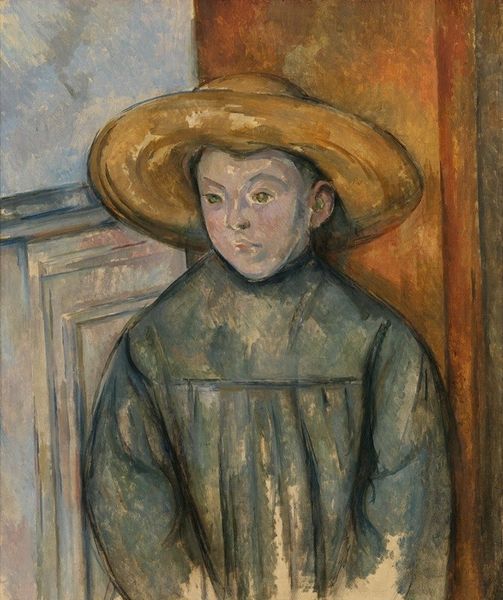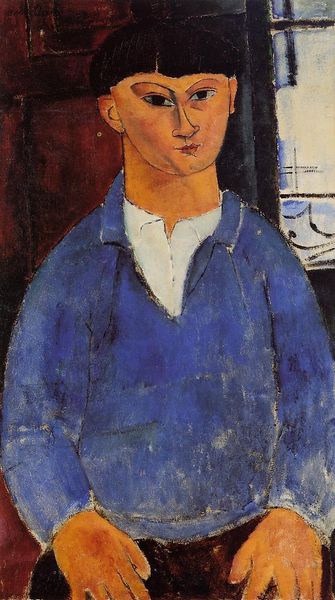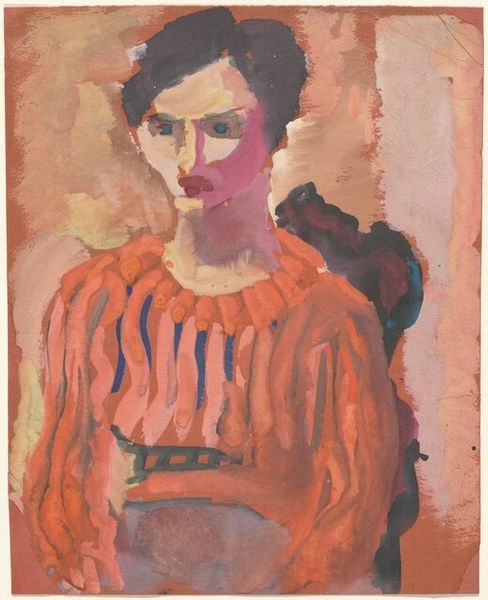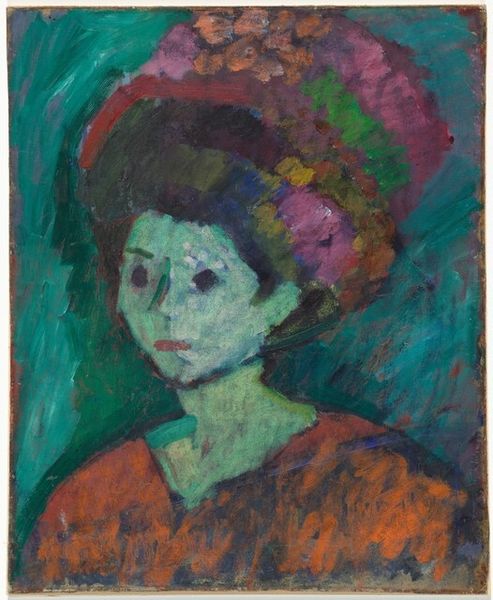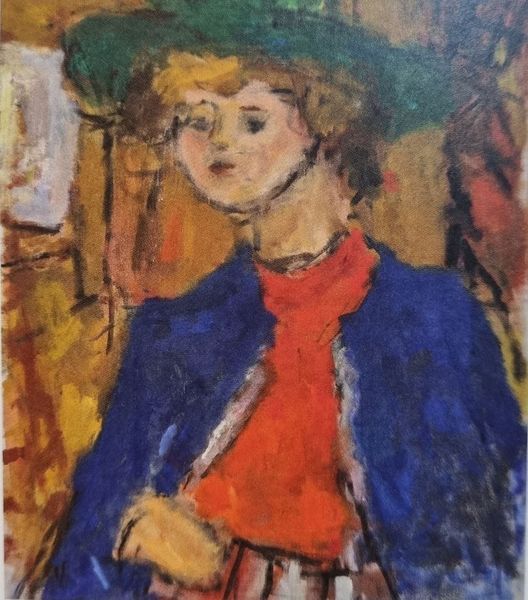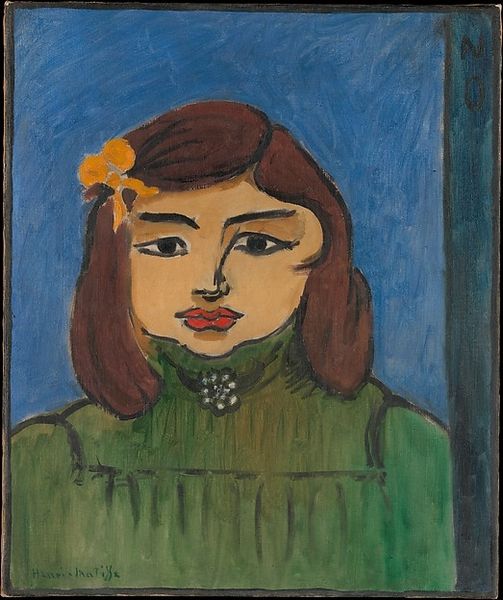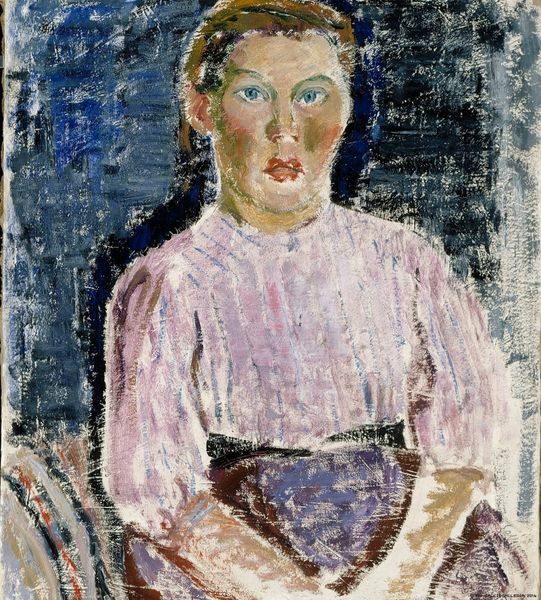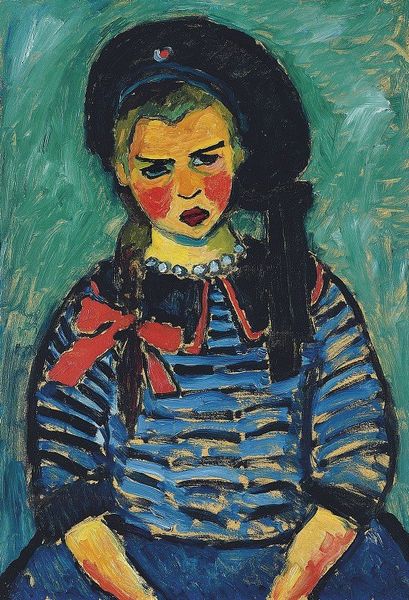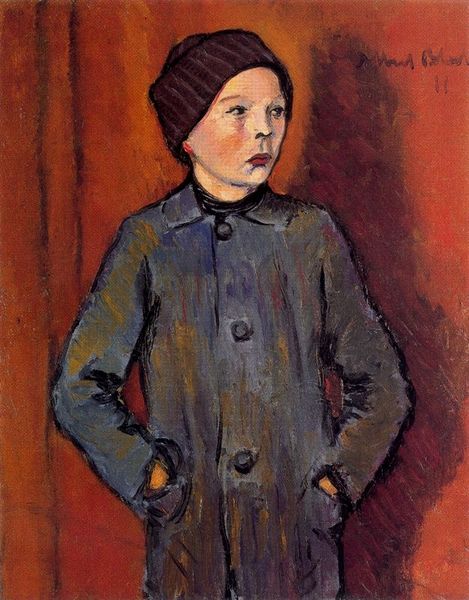
Copyright: Public domain
Editor: We're looking at "Bust of a Young Girl," an oil painting by Amedeo Modigliani, painted around 1908. It has an introspective mood, a kind of melancholy about it, wouldn't you say? What’s your take on this piece? Curator: Absolutely. Considering the socio-political context of the early 20th century, one sees this work reflecting the era's focus on representing modern individuals. But also consider Modigliani's struggle as a marginalized artist within the Parisian art scene. Does that affect how you interpret her gaze? Editor: It does give a certain vulnerability to it. She doesn't meet your eyes, and I wasn’t sure if it's shyness or resistance. The colours and loose brushstrokes...do you think they are indicative of the politics of representation at the time? Curator: Yes, definitely. Think about the Impressionists and Expressionists before him. Modigliani adopted a distorted figure, a symbol of freedom in opposition to established norms, challenging traditional academic ideals. What about the institutional aspect of display; would you view the piece differently in a large salon exhibition or a private gallery? Editor: That's a good question. In a private gallery, I think I would concentrate more on her psychology as an individual. In a salon, she'd become part of a larger political statement. I hadn't thought of that! Curator: Precisely! It shows how art and its settings become intertwined. Even today, museums shape how the public sees art and, thus, how it impacts the socio-political dialogue. Editor: This has totally opened my eyes to layers I hadn't seen before, particularly concerning its presentation within society! Curator: It's the art historian's task: to help the public connect artistic intention with social narratives, providing richer, diverse viewpoints on art.
Comments
No comments
Be the first to comment and join the conversation on the ultimate creative platform.


